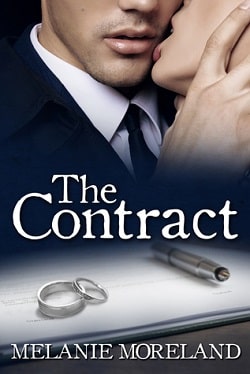He would need the crowbar for further investigation. But it lay up at ground level. He switched off the light, gripped the rope, and climbed. At the top he pulled himself up through the hatch and was just about to retrieve the tool when something caught his attention.
In the distance.
Beyond the mansion.
The night broken by the rhythmic flashing of blue lights and the wail of sirens. Then he saw two more sets of flashing blue lights.
All coming his way.
“Ah, crap,” he whispered. “That can’t be good.”
FORTY-ONE
WASHINGTON, D.C.
1:40 A.M.
ROWAN STEPPED FROM THE CAB. ACROSS 1ST STREET THE WHITE façade of the Capitol was lit bright. He’d worked through the night many times when Congress was in session, especially years ago during his first two terms. Not so much anymore, though occasionally some issue of importance mandated the show of a national legislature that refused to sleep.
But that’s all it was.
Show.
The real work never happened on the legislative floor. That was accomplished in closed offices, or at restaurant tables, or during a walk on the National Mall. The federal government was fatally flawed and had been for a long time. It no longer possessed the ability to actually do anything constructive. Instead, what it did best was suck away resources from both the people and the states. It could do little to solve any problem, and refused to allow anyone or anything else to do so, either. What he’d read yesterday morning from the Texas petition on secession had stuck in his mind. Given that the state of Texas maintains a balanced budget and is the 15th largest economy in the world, it is practically feasible for Texas to withdraw from the union, and to do so would protect its citizens’ standard of living and re-secure their rights and liberties in accordance with the original ideas and beliefs of our founding fathers which are no longer being reflected by the federal government.
Perfectly said.
He could not recall the precise moment when he became a secessionist, but he was utterly convinced that his position was correct. Whenever any form of government becomes destructive, it is the right of the people to alter or to abolish it, and to institute new government, laying its foundation on such principles and organizing its powers in such form, as to them shall seem most likely to effect their safety and happiness. Thomas Jefferson and the fifty-five other patriots who signed the Declaration of Independence were right. Interesting how those men supposedly possessed the natural and inalienable right to violently rebel against an oppressive England. Yet if their descendants tried to do the same against the United States of America, myriad federal statutes would be brought to bear against their every act. When did Americans lose those “natural and inalienable rights”?
He knew.
1861.
With Abraham Lincoln.
But he intended to reclaim them.
The entrance of Stephanie Nelle into the fray was unexpected. One of his legislative aides had briefed him about the swirling rumors. Nothing definitive, only that questions had arisen about her, and the White House was trying to handle the problem in secret. No one wanted any scandal this late in the term. Had his requests for information accelerated things? Or was he actually responsible? Hard to say. All he knew was that Nelle had appeared, knew he’d been searching for classified records, then offered to provide exactly what he was after.
So he’d taken advantage of the situation.
He climbed a granite staircase past the Neptune fountain to the entrance of the Library of Congress.
Trust Nelle?
No way.
Use her?
Absolutely.
STEPHANIE WAITED INSIDE THE VESTIBULE OF THE GREAT HALL at the Library of Congress. Ordinarily, the building would be sealed for the night, only security guards present. But after leaving Rowan she’d called the White House. Fifteen minutes later the library director contacted her. Thirty minutes after that an older gentleman distinguished by a warm smile, thinning gray hair, and steel-rimmed spectacles met her at the library. He introduced himself as John Cole and, though it was the middle of the night, wore a suit and tie and seemed quite chipper. She’d apologized for disturbing his sleep, but he dismissed her concerns with a wave of his hand, saying, “The director says I’m to do whatever you ask.” After explaining what she had in mind, he disappeared into the bowels of the building, leaving her alone in the Great Hall.
Two marble staircases flanked her, the sparkling white walls towering seventy-five feet to an ornate stucco ceiling centered by stained-glass skylights. A large brass sun-shaped inlay highlighted the marble floor, surrounded by more inlays of the zodiac. The sculptures, murals, and architecture combined into a grand European style.
Which had been the whole idea.
Built in 1897 as a showcase for the art and culture of a growing republic, a place to store the national library, the domed Jefferson Building had evolved into one of the world’s great repositories. Cherubs sprang up along both staircases and she knew their symbolism. They represented the various occupations, habits, and pursuits of modern life. She spotted a musician, a doctor, an electrician, a farmer, a hunter, a mechanic, and an astronomer, each complete with the tools of the trade.
It was appropriate that the building had eventually been named for Jefferson as, after the War of 1812—when the British burned Washington, including the library at the time—he sold the nation 6,400 of his personal books to form the nucleus of a new collection. That modest beginning had grown into hundreds of millions of objects. She once read that around 10,000 new items were added each day. Nearly all of it was open to the public, available for inspection. All you needed was a library card, which was easy to obtain. She’d maintained one for years. When she lived in D.C. she’d often enjoyed roaming the exhibit rooms, or attending a presentation in the auditorium.
Something was always happening at the library.
Some of the materials, though, were restricted, ostensibly because of their fragile state or rarity, kept in a special collection room on the upper floor.
What Rowan sought was held there.
ROWAN APPROACHED THE THREE BRONZE DOORS, REPRESENTING tradition, writing, and printing. Like the temple in Salt Lake, the Library of Congress was replete with symbolism. The voice message from Stephanie Nelle had told him to bypass the usual visitor entrance one flight below and knock on these doors.
He did.
One opened and he saw Nelle.
He stepped inside the Minerva foyer, named for the eight statues bordering the ceiling representing the goddess of universal knowledge. Her symbol, the owl, repeated throughout.
They entered the Great Hall.
“I thought it better you come inside here than downstairs,” she said. “No security cameras.”
He appreciated her discretion. “I’m always impressed when I visit this place.”
“It is a magnificent creation. We’re alone, except for one curator, who is retrieving what it is you wish to see. I’m curious, though. Surely you could have gained access to the rare collection room without my help.”
“I probably could. But only in the past two days have I discovered the book’s relevance, and I would prefer not to draw attention to my inquiries. Lucky for us both you came along.”
“I told the library that this was a matter of na
tional security you and I were handling. They did not question. Nor will anyone note our visit in any logs. I had the volume brought down to the Congressional Reading Room. I thought you might be more comfortable there.”
She motioned to their right and they found a long richly decorated gallery. Sets of double doors opened off it into an equally long room. Oak floors and half walls, together with a paneled ceiling inset with colorful paintings, created a regal atmosphere. Wall sconces burned softly and illuminated oak scrolls. A marble fireplace, adorned with mosaics, anchored each end. He knew this room’s former pedigree. Once it had been kept open when Congress was in session, staffed by a librarian, messengers available twenty-four hours a day. Back in the 1960s and ’70s, when long filibusters were common, staff would sleep here on cots, then ferry books by the hundreds across the street to keep the stall alive. The cots were gone, the room used now for ceremony.
“It’s there,” she said.
He caught sight of the treasure lying on a table surrounded by a sofa and upholstered chairs before one of the fireplaces.
He walked over and sat on the sofa.
The book measured about four inches by six inches, a little over an inch thick. Its tan leather bindings were in remarkably good shape.
He opened it and read the title page.
BOOK OF MORMON
Translated By
JOSEPH SMITH JR.
Third Edition
Carefully Revised By The Translator
Nauvoo, Illinois
Printed by Robinson and Smith
Cincinnati, Ohio
1840
A bookplate affixed to the cover sheet noted an identification number and that the Library of Congress had acquired it on December 12, 1849.
He felt awed to be in its presence.
In 1838 the Saints were headquartered in Missouri. But on October 30 a rogue militia attacked the peaceful village of Haun’s Mill and massacred most of the inhabitants. Fearing more violence the Saints fled to Illinois, where a need developed for more copies of the Book of Mormon, the original 1830 printing exhausted. The $1,000 it would have cost to print new copies was nonexistent, but a divine revelation told them what to do. Circulars were sent throughout the church, and for every $100 sent toward the printing costs, a branch would receive 110 copies. Prophet Joseph himself endorsed the financing plan and set about revising the text, correcting errors. Money flowed in and five thousand new copies were eventually produced, one of which lay before him.















